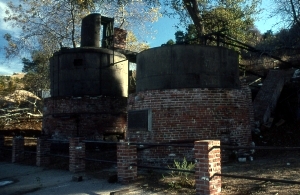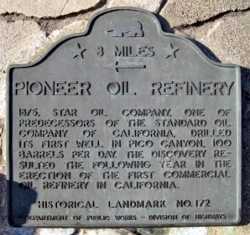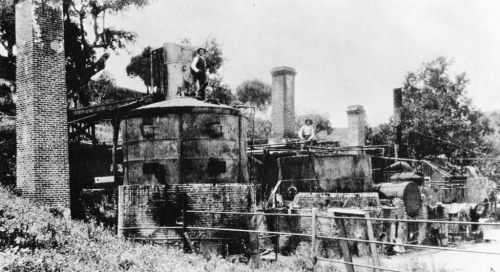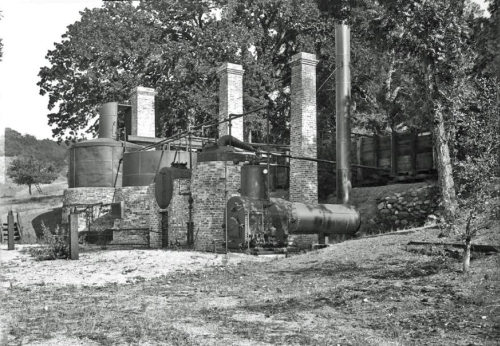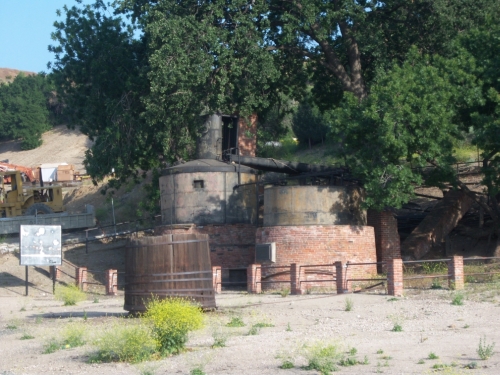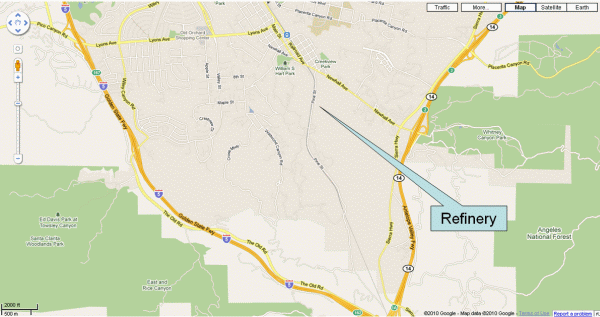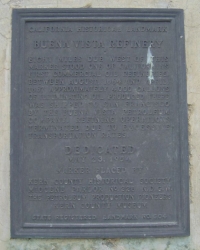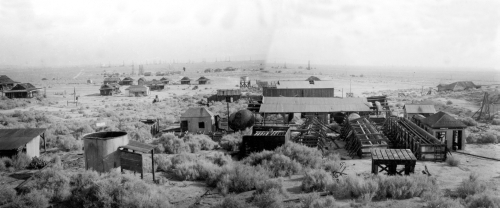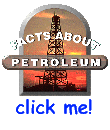|
Old Stuff from the Oil Fields
The process of distilling kerosene from oil is much like making whiskey from corn mash. The oil is heated in a still, generally made of brick, until the kerosene component boils off as a gas, which is collected in a pipe at the top of the still, where it cools, and condenses out as liquid kerosene at the other end of the pipe. From the 1860s until the turn of the century when electric lights became commonplace, kerosene was the illuminant of choice, being the low-cost alternative to whale oil, and kerosene manufacture provided the main market for rock oil. Fortunately for the oil industry, when the U.S. made the switch from kerosene lamps to electric lights, the automobile was making its debut, providing a market for gasoline, which up until that time had been a worthless byproduct from the distillation of oil.
Two small stills, of 15-barrel and 20-barrel capacities, were moved from an earlier refinery built by the Los Angeles Oil Company in 1873 at nearby Lyon's Station stage stop, and to these were added two new 120-barrel and 150-barrel stills. The Andrews Station Refinery distilled kerosene until 1888, when production was shifted to a much larger refinery that Standard Oil built at Alameda on the San Francisco Bay. A photograph of the Andrews Station refinery as it looked in the 1880s is shown below.
The Andrews Station Refinery, which the locals began calling the Pioneer Refinery, sat decaying until 1930 when Chevron did a major restoration. A picture below that was published in the California History Nugget magazine in January, 1938 (vol. V, no. 4) shows how the refinery looked after the restoration.
Chevron did another restoration (if we can call it that) in the 1950s, when they dismantled the two smaller stills, one of which was moved to a museum at their Richmond Refinery. Of course, they closed that museum many years ago, which today leaves just the two larger stills that are shown below.
Even though it is now owned by the city of Santa Clarita, The Pioneer Refinery is a little hard to find, as it is in the middle of an industrial lot. The map below shows where you can find it. However, it is accessible only during working hours, and it is completely enclosed by a fence. Supposedly, the city has plans to restore it and make it a little more accessible.
The successor to the Buena Vista Refinery was the refinery for the Sunset Oil Company that Hugh Blodgett and Solomon Jewett erected about 1889. The Sunset refinery was in operation by 1889 at a site about a mile southeast of modern Maricopa, and they used open kettles to distill kerosene from asphalt. Several shallow wells were drilled to provide flux for heating the asphalt, and the primitive derricks for these early wells are clearly evident in the two views below of the Jewett and Blodgett operations.
The discovery of Kern River Field near Bakersfield in 1899 resulted in the start up of refineries in town, and several refineries were operating in the San Joaquin Valley by the start of WWI. However, the emphasis by then was refining gasoline for cars, not kerosene for lamp oil. Today the big refinery in Bakersfield is the Mohawk Refinery, shown below. that started in 1932, and has changed hands several times. There is also the old El Tejon refinery in Arvin (lowermost photo) that started up in 1934 and is now operated by Kern Oil & Refining Company. However, to most people it is known simply as the Arvin Refinery.
|
|

